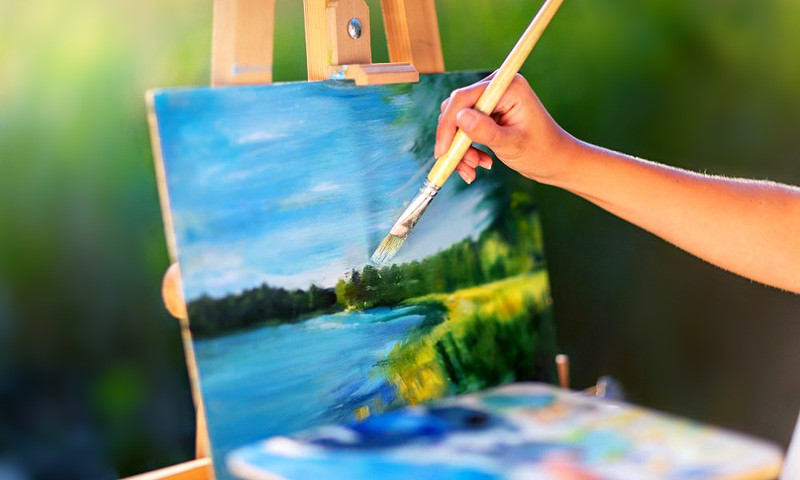There are many different paint types at our disposal, all which vary in their ingredients and the methods we use them for. The kind we ultimately choose to use, of course, is entirely dependent on our taste and the intended outcome of our project. If you want to take up painting, you may get lost as you explore all the different options available to you and the discrepancies between them. The paint mediums we most often see in artwork are oil, watercolor, and acrylic. Here, we give an overview of the three.
Oil Paint
Oil paint is one of the trickier paint types to work with, and it produces stunning results. Something you can consider either a pro or a con, depending on your preferences, is the time it takes to dry. It takes oil paint an incredibly long time to dry completely, which can be useful. You can easily reactivate old color with solvents and blend the colors of old and new layers together. The slow drying properties, however, make it so that you can’t varnish your painting for several months after the project is completed.
One thing to be wary about is the toxicity of oil paint. You’ll need to be in a well-ventilated location when you use it, and wear clothes you can remove immediately when you’re done painting. There are different ways you can be mindful with the ingredients you use. For example, you can use
walnut oil as your medium or as your solvent, as opposed to something such as turpentine, to avoid harmful fumes. Make sure you use supplies meant for oil paint to prevent cracking or yellowing.
The supplies used for oil painting can be expensive, but they’re well worth the investment if you show dedication to your craft.
Watercolors
Watercolors are ideal for the cautious painter or the one who enjoys an element of whimsy present in their works. Watercolors are meant to be translucent, so you can layer and tweak your work as needed. The downside is you have less control when it comes to the outcome of watercolors. Some consider it more difficult to achieve careful details when using them.
The surface you use with watercolor is extremely important, and canvas is not recommended. To achieve the best results, we advise you to select paper specifically crafted for watercolors.
Watercolor is an ideal medium,because it’s easy to clean and can be reactivated with water, which makes it an economical choice. The price range for watercolors greatly fluctuates depending on the quality, so beginners have a wide range of options.
Acrylics
Acrylics are a happy middle ground between the two paint types above, and they’re a favorite for many artists. The paint is often both affordable and non-toxic. It’s water resistant when dry, so it’s a great option for murals or any artwork exposed to the elements.
Acrylics dry incredibly fast, which can act as an advantage or a disadvantage. It allows for quick layering, and you can use it with a variety of other mediums—for example, you could layer it with
mica powder for extra depth in your mixed-media artwork. The main disadvantage is you can’t really walk away from the piece until you’re finished; if you walk away for a long time, the paint may dry before you can change it.
Acrylics also usually dry a little darker than they appear when wet, so consider mixing your colors a bit lighter than you want them to ultimately appear. You should also make sure you wash your brushes once you’re finished with them. Since the paint is no longer soluble after the water evaporates, you can ruin the brush if you don’t clean it immediately after each use.

